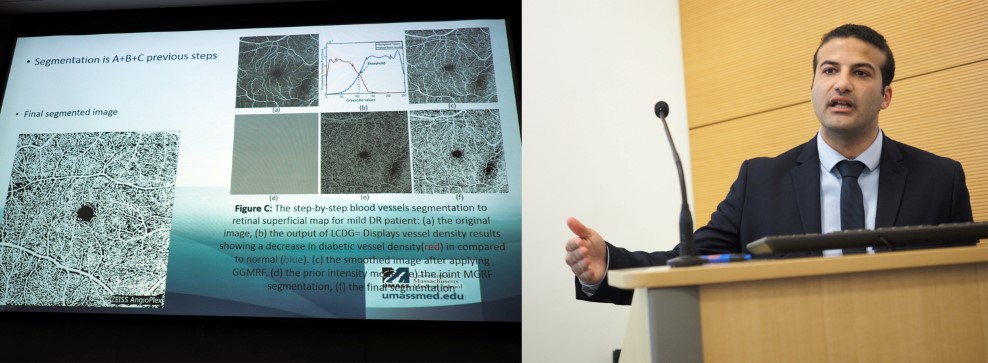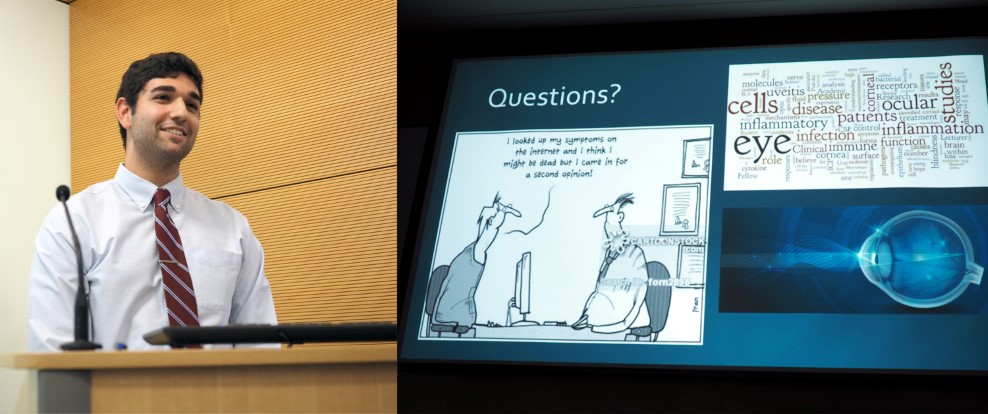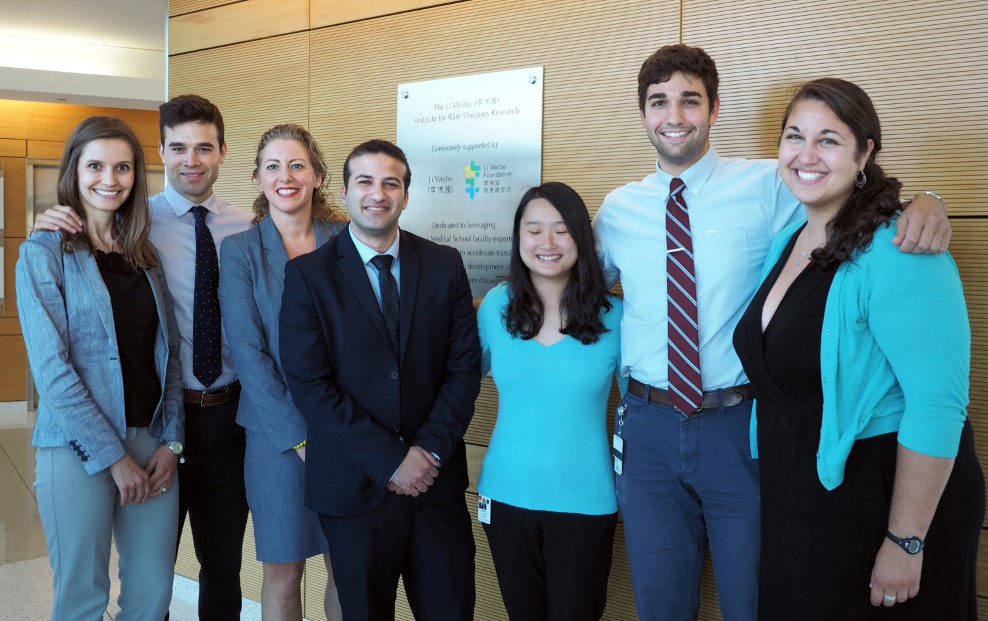UMASS Eye at ARVO
Date Posted: Monday, July 02, 2018Members of the Department of Ophthalmology & Visual Sciences, UMass Chan Medical School participated in the ARVO 2018 annual meeting from April 29-MAy 3, 2018 in Hawaii. The participants also presented their findings at the Ophthalmology Vision seminar series on June 21, 2018 at the UMass Chan Medical School. Here are the highlights of their presentation day:

Dr. Omar Abdelmegid, a Research fellow in Dr. Shlomit Schaal's laboratory presented his work entitled "Automated 3-D segmentation of retinal layers from optical coherence tomography images using pattern recognition-based method". His work focuses on developing novel algorithms that allow for automated early detection of subtle microvascular changes in diabetic patients prior to any clinical signs of diabetic retinopathy.
With the use of optical coherence tomography-angiography images from the retina clinic, Dr. Abdelmegid and his team were able to identify significant parameters that will in the future enable ophthalmologists to recognize at a very early stage, those patients who are at a higher risk to develop diabetic retinopathy. These findings will restructure early diagnosis and care and reduce the number of complications and individuals with disease progression to the more severe advanced stages, thus providing the advantages of numerous clinical & public health benefits.

Dr. Tedi Begaj, a former UMass Chan Medical School student presented his findings entitled "Characterization of Expression of Key Enzymes of Glycogen Metabolism in the Mouse Retina”. During his research year in the Cepko lab, Tedi investigated the role of glycogen in the adult mouse retina. His work showed that in the adult mouse, there appears to be histologically demonstrable glycogen in the inner retina as well as the photoreceptor layer. There does not seem to be an apparent difference in glycogen staining between light and dark-adapted retinae. Further work remains to be done on understanding the importance of glycogen metabolism in the mouse retina.

Samuel Leeman, research assistant in Dr. Shlomit Schaal's laboratory and Ophthalmic Scribe in the UMASS Eye Center, presented "The Current Online Face of U.S. Academic Ophthalmology". Working alongside Dr. Tedi Begaj, Dr. Omar Helmy and Dr. Schaal, this study investigated the online representation of academic ophthalmology departments all over the United States.
Evaluating comprehensiveness and navigational ease of the online content, data was obtained in various website characteristics such as clinical access, subspecialty services, patient support and accessibility, residency/fellowship information, and research/faculty details. Attempting to encapsulate the diverse viewpoints of all the possible users of such a website, the results showed that significant work could still be done to support the rapidly growing numbers of internet traffic. This study, recently accepted for publication in the Journal of Academic Ophthalmology, may be used by the various institutions to improve their online content.

Dr. Wei Zhang, a research specialist in the laboratory of Hemant Khanna, Department of Ophthalmology & Visual Sciences, presented his work entitled "CRISPR-Cas9-induced mutations in the mouse Rpgr (retinitis pigmentosa GTPase regulator) gene provide new insights into the role of the distinct RPGR isoforms in photoreceptor cilia”.
Wei reported his findings on the retinal degeneration phenotype in a novel mouse model of X-linked retinitis pigments in which the CRISPR/Cas9 system was used to engineer a human mutation in the Rpgr gene. His work showed a relatively severe photoreceptor dysfunction and degeneration in this mouse model, which is develops at earlier ages as compared to already reported conventional Rpgr knockout mice. This mouse model is now being analyzed to understand the molecular mechanisms of the disease and is being utilized for gene therapy studies.


